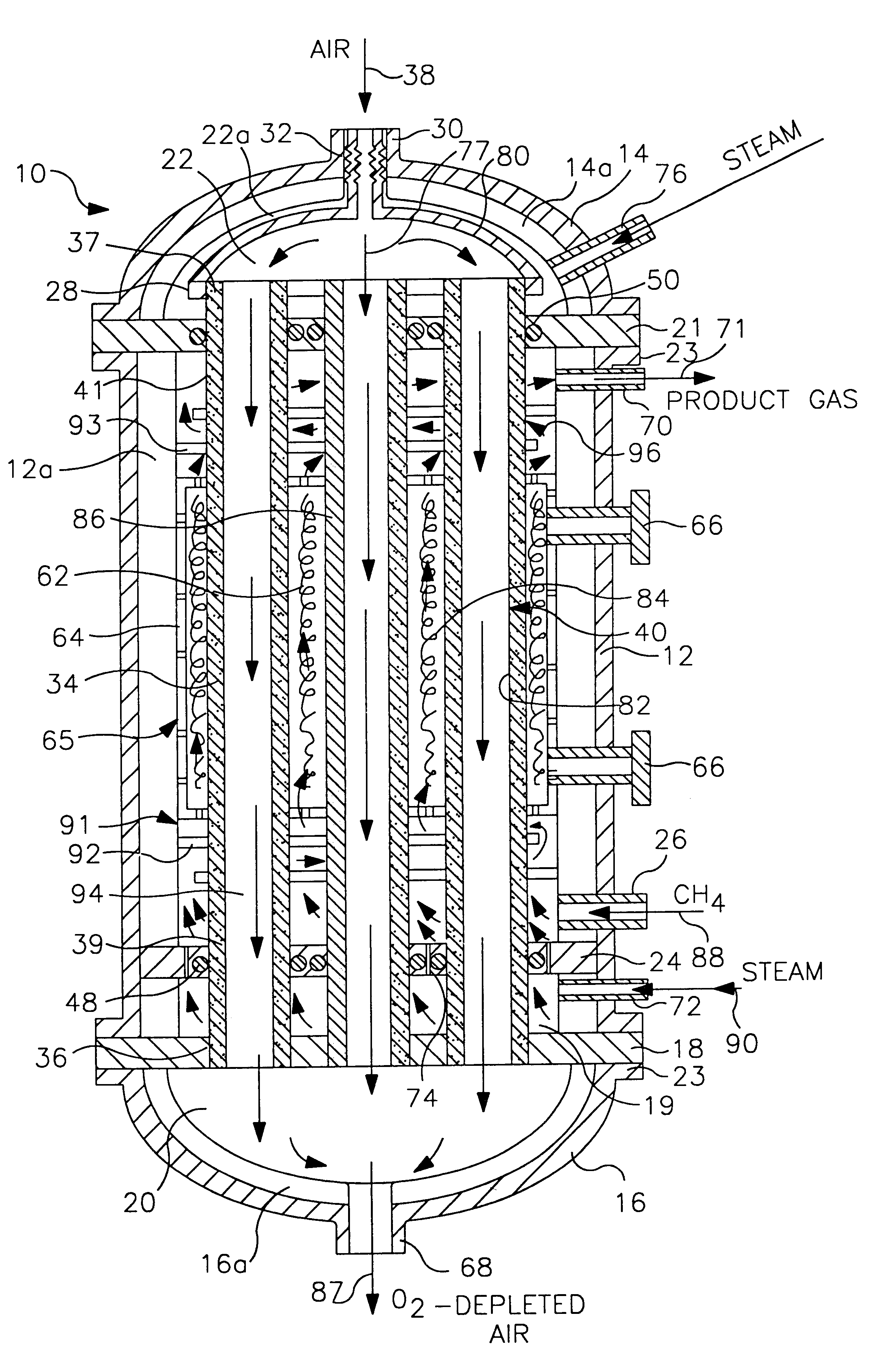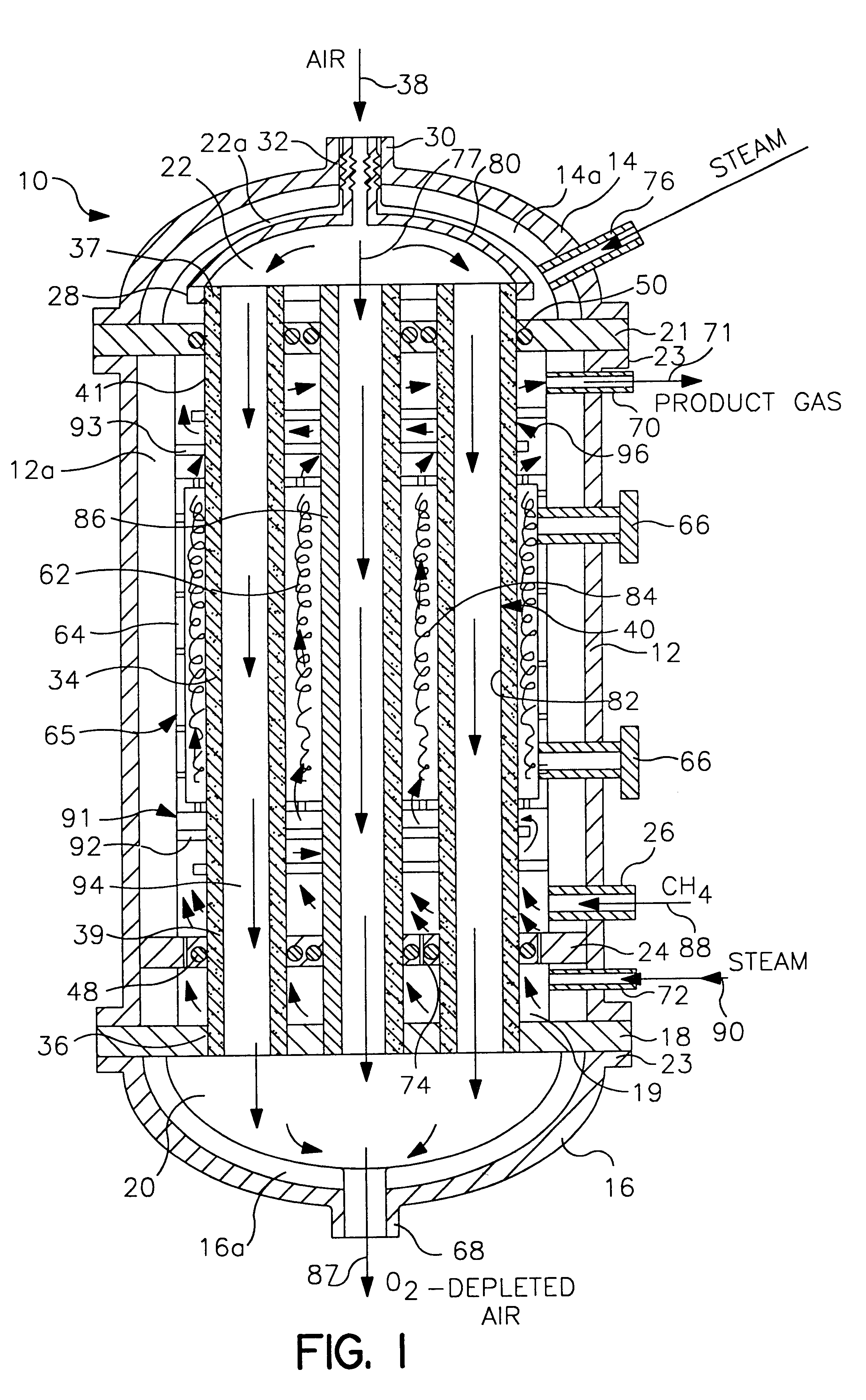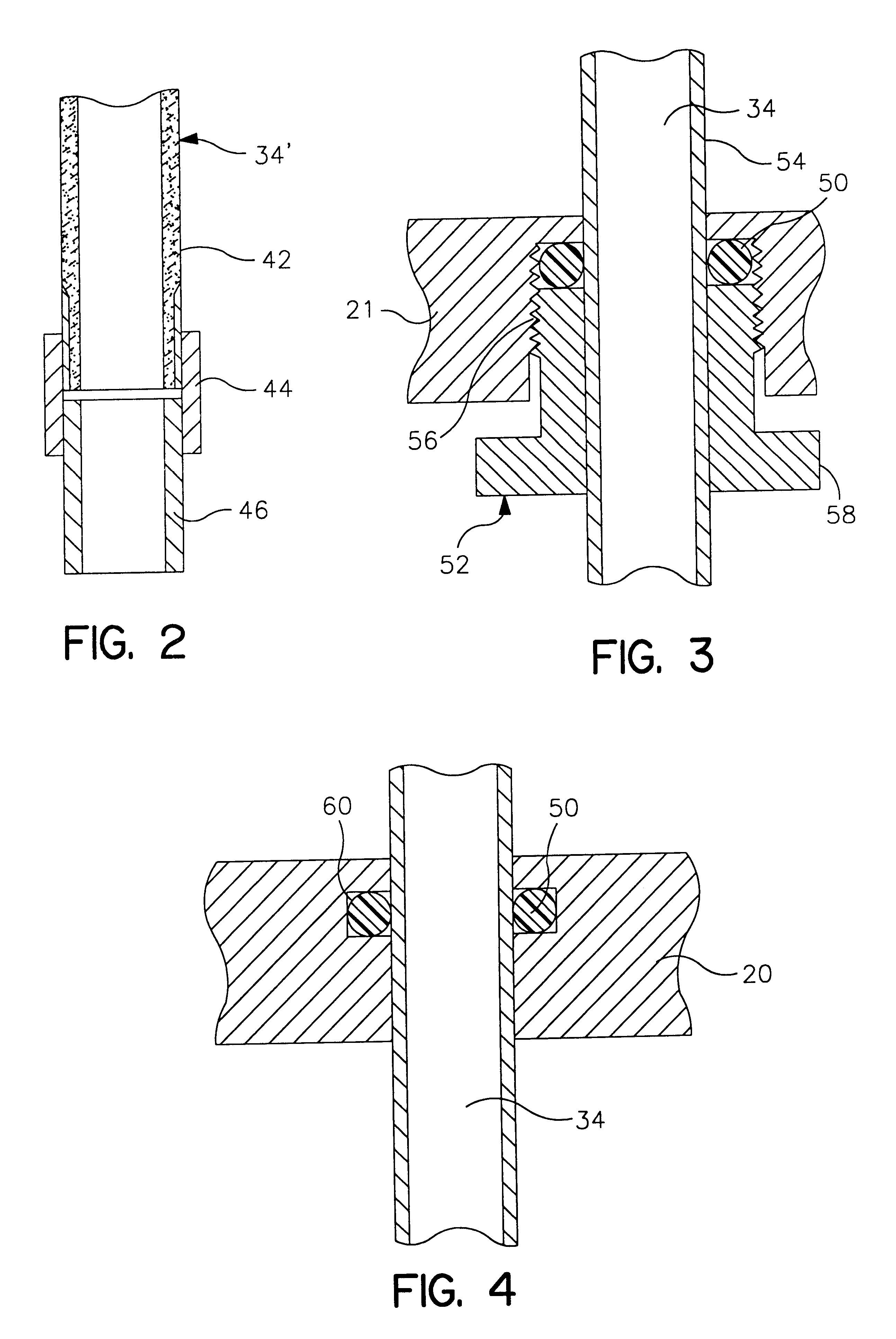Process for producing a syngas
a technology of syngas and process, applied in the direction of gas-gas reaction process, oxygen/ozone/oxide/hydroxide, energy input, etc., can solve the problems of difficult economic transportation of natural gas and methane, difficult maintenance and high maintenance costs of steam reforming reaction and partial oxidation reaction. , to achieve the effect of increasing the oxygen transport driving force, increasing the oxygen flux, and reducing the partial oxygen pressure of the anod
- Summary
- Abstract
- Description
- Claims
- Application Information
AI Technical Summary
Benefits of technology
Problems solved by technology
Method used
Image
Examples
Embodiment Construction
tube and shell reactor of the type illustrated in FIG. 1 was computer modeled. The reactor had 1,000 reaction tubes 34 with each reaction tube having a length of 31 feet. Of this length, the reaction section 65 had a length of 18 feet, the pre-heat section 91 had a length of 6 feet and the cooling section 96 had a length of 7 feet. The tube to tube pitch was 1.5" and the tube bundle diameter was 4 feet. Each tube was formed from a dense mixed conductor that was capable of selective ion transport in the reaction section 65 and was inactive outside the reaction section 65. The tubes had an outside diameter of 1 inch and an inside diameter of 0.875 inch. The membranes 40 in the reaction section 65 were formed from LaSrFeCr perovskite.
FIG. 13 graphically illustrates the gaseous composition of the reactor. The horizontal axis represents the percent of the reaction section that has been traversed by the reaction constituents while the vertical axis identifies the molar percent of each con...
PUM
| Property | Measurement | Unit |
|---|---|---|
| molar ratio | aaaaa | aaaaa |
| temperatures | aaaaa | aaaaa |
| temperatures | aaaaa | aaaaa |
Abstract
Description
Claims
Application Information
 Login to View More
Login to View More - R&D
- Intellectual Property
- Life Sciences
- Materials
- Tech Scout
- Unparalleled Data Quality
- Higher Quality Content
- 60% Fewer Hallucinations
Browse by: Latest US Patents, China's latest patents, Technical Efficacy Thesaurus, Application Domain, Technology Topic, Popular Technical Reports.
© 2025 PatSnap. All rights reserved.Legal|Privacy policy|Modern Slavery Act Transparency Statement|Sitemap|About US| Contact US: help@patsnap.com



